By Gary Potter

Foreword 2011 (from Roger Buck)
We are very thankful this fascinating, rich and insightful piece has been made available to us through the Creative Commons Attribution – Share Alike License. (For more regarding attribution, please see notes at the end of this essay. As described there, very small modifications have also been made to this article).
Now, this piece opens out a lost world—a lost world of men and women – saints, philosophers, theologians, popes and very ordinary people too – who despaired at the tragic turn the Nineteenth Century was taking, plunging into materialism: Forgetting Jesus Christ, His Church, His Sacraments.
It is a lost world of those who tried to forge a Catholic alternative. And, as Gary Potter makes clear, so much of their story took place in France or in the French language.
Whether it is in the apparitions of Our Lady in the Rue du Bac, Paris to St Catherine Labouré or to the Saint, Bernadette of Lourdes, whether it is the impulses generated by Joseph De Maistre or Cardinal Pie (who deeply influenced St Pius X), the Francophone world was at the spearhead of Catholic resistance.

A mighty renaissance of the Church flourished in France, before it met with draconian measures from the Third French Republic. (Some feeling for that renaissance can be gained from material, which I have quoted in a personally important piece here).
This lost world is very important to us at this webproject. And this piece by Gary Potter can do so much to introduce it to a new audience in a vivid way.
Unfortunately, we are not without some relatively minor reservations regarding Potter’s writing. Indeed, it is only after interior struggles that we publish it – with some very minor editing.
What is the problem here?
Perhaps ultimately the problem is that Potter FEELS with a heart that is alive. He is not trapped in a secular, materialistic zeitgeist and his heart weeps for what he knows that modern society has forgotten.
Yes, Potter feels. He is not comfortably numb to the horrors of the modern age.
As he writes in his conclusion below: “I shall concede that my feeling for what once was may overpower me.”
Obviously this, in itself, is not the reason we hesitated. The main reason is that in our view, Mr Potter occasionally—only occasionally!—crosses a line from lamenting the tragedy of modernity into saying things that seem to us needlessly insulting.
Thus, for example, it is one matter to feel the immense horror of the cleaving of Christendom. But invective is more than such.
Moreover, we would argue that such statements could be counter-productive to Potter’s purpose here. For modern readers – who frequently have very little grasp of history akin to Mr Potter’s – may well “switch-off”, when confronted with a piece as “notoriously” anti-modern as this. This is a sad truth. We wish they would pause a little to listen to Potter and not be so assured of all their secular education has taught them.
Still listening – just simply listening – to Potter will be tough for some. Adding invective into the mix only makes it tougher. For this reason, we advocate a ‘Gentle Traditionalism’ at this website . . .

Occasionally Potter’s references may also be obscure to modern readership. Who will remember today that Catholics once spoke of “Americanism” as a heresy? But what they meant by “Americanism” was not simply patriotic love of one’s country, but rather something more complex—and dubious.
Still, obscure references could be misinterpreted here and this also regretfully guided us in very slight editing. Still, no more than three sentences and a dependent clause or two are missing. There is more about this at the end of the post.
The vast majority remains, but this still does not mean we completely concur with that which remains. There are still particulars we differ on and we ask readers not to think publishing this constitutes automatic endorsement of everything that is here.
Still, we feel with Potter what has been lost. We salute, with Potter, the noble spirits of the past who tried to preserve Christendom. We believe with Potter in the need to re-awaken cultural memory to a different “Road Less Travelled” than that taken by the dominant Anglo-American civilisation of the last centuries.
Finally, we also feel that the piece below can help folk gain a background to the Counter-Revolutionary thinking of Valentin Tomberg, which we explore at this website. As we are advancing in a new series here, Tomberg clearly drew on much that Potter is evoking here.
Foreword for Monarchy by Roger Buck
2023 Update: Looking at this now, eleven years later during a major overhaul of this website, I suspect I was being ridiculously hesitant!
Yes, I still advocate a ‘Gentle Traditionalism’ especially in light of much the bile on YouTube—but the good Mr. Potter stands head and shoulders above all that!
But now over to Gary Potter himself!
From Gary Potter:

One of the most justly celebrated works of Catholic history written in the last one hundred years was The Thirteenth, Greatest of Centuries, by James J. Walsh. Figured as the apogee of the Age of Faith, the Thirteenth probably has been the greatest of all centuries in Christian history.
That does not mean that greatness marked no other period of the past two millennia. Other periods, other centuries, must surely be regarded as more than merely notable.
Consider the decades that followed the Protestants’ arrogating to themselves the right that belongs exclusively to the Church: deciding what is authentic Christian teaching. Surely this period we know as that of the Counter-Reformation, with all the saints it produced and all the art, architecture, and music we call “baroque,” must qualify as great.
And what about the fourth century, when Christianity finally became the religion of the old Empire, numerous theological disputes were resolved, and orthodoxy thereby established? Could it not be regarded as great?
The point of the lines that follow here is that at least one more century, one now much disparaged and even maligned by Modernists, latter-day Americanists, and other liberals within Catholicism, ought to be seen as, in fact, great in the history of our religion, great also in the production of Catholic art and (still more) in terms of intellectual developments, especially among statesmen and political thinkers (and several popes). We speak of the nineteenth century.
It needs to be observed that the centuries we have named, and other times that could be nominated as great, followed upon periods that were anything but, or arose in reaction to times that were still bad.
The establishment of orthodoxy in the fourth century came at the end of the earlier centuries of the Church when various heresies were so widespread and had so many adherents it can be said that in a real sense there was no Christianity but, instead, numerous versions of it competing with one another for primacy. It took the establishment of orthodoxy for the One True Faith to emerge as exactly that: one religion that was the true one …
The Thirteenth century, hymned by Walsh, had St. Thomas Aquinas to epitomize it in religion and King St. Louis IX in the political order (with the Sainte Chapelle he built in Paris to exemplify its art).
It marked the coming to an end of the long period of turbulence, disorder, and outright conflict into which many lands had relapsed following the demise of Emperor Charlemagne, whose stupendous work was the consolidation of Christendom — an international commonwealth of diverse Christian peoples meant to be universal as well as unified, so far as unity was possible and desirable, under the rule of a consecrated monarch with the pope standing ready to warn him of any dangers.
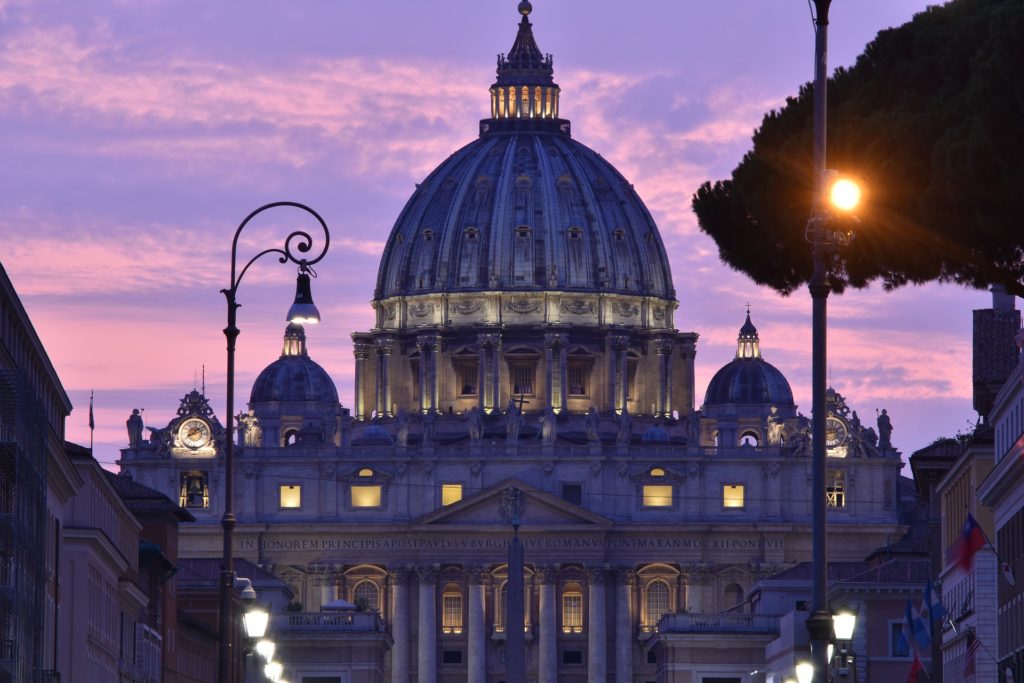
The glorious Baroque Era arose, of course, in direct reaction to the Protestant Revolt commonly referred to as the Reformation, which was still unfolding at the time of the reaction. Such were the power of the ideas and the beauty of the art it generated, it is easy to forget that some of the leading figures of the time were not Catholic.
They do not seem Protestant like, say, Calvin. For instance, how many of us listening to his Mass in B Minor or the Passion according to St. Matthew think of J.S. Bach as a Lutheran? And let it be remembered that Handel, another German Protestant of the Baroque, spent some of his best working years in Rome, the very headquarters of the Counter-Reformation. …
As for the Nineteenth Century, it could not have begun more inauspiciously for the Catholic religion, or at least for the Church as an institution. The Eighteenth Century had seen the influence of the Enlightenment, with its rationalism, secularism, subjectivism, and optimism based on belief in human perfectibility, reach its greatest height.
Indeed, so influential did the ideas spread by this intellectual movement become, they replaced the teachings of the Faith as the guiding force in the lives of many men, if not yet nearly all.
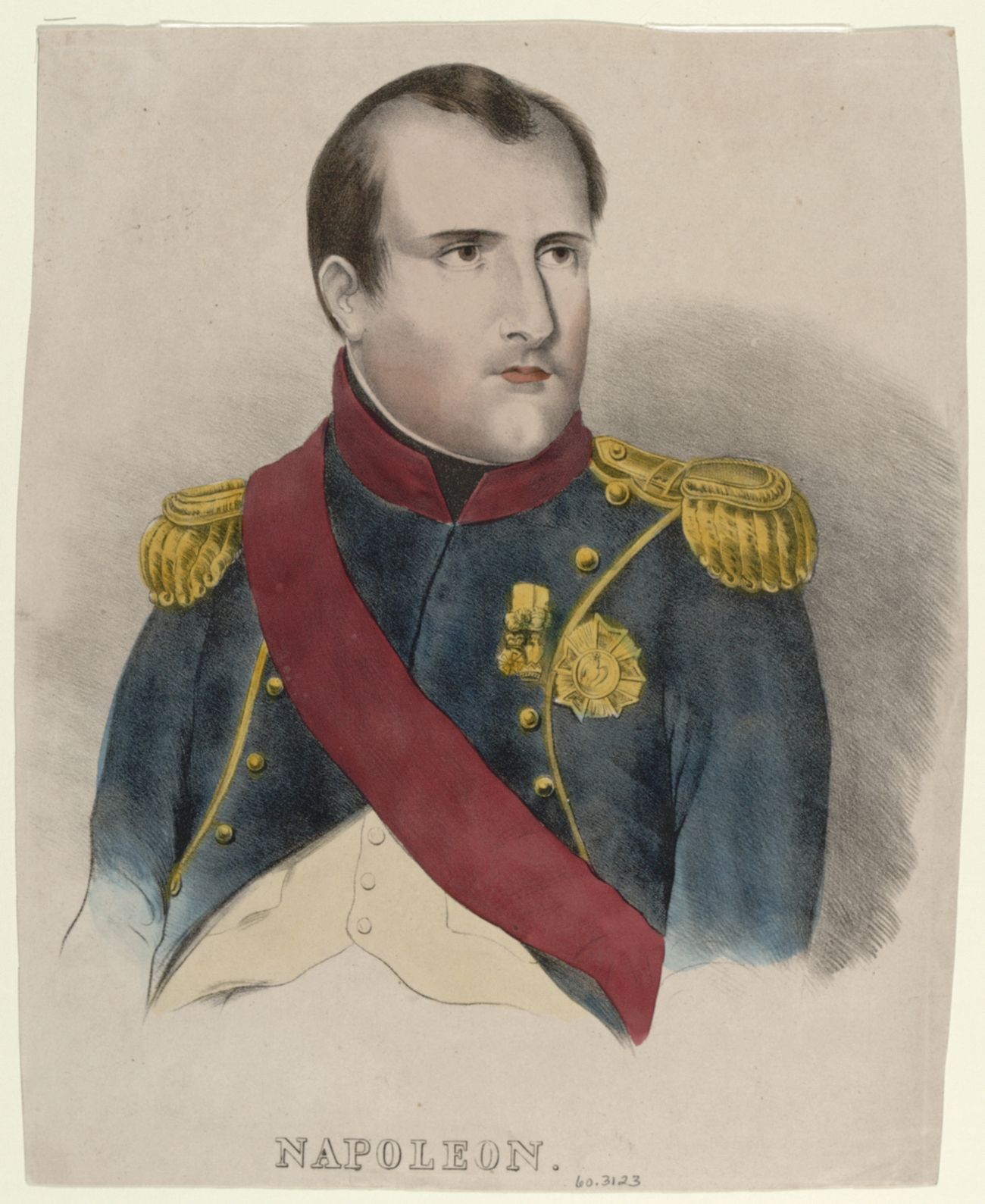
The result was the overthrow of Christian government in France, which was followed by its overthrow elsewhere so that, by our day, it exists nowhere. The series of events that produced that result and which we call the French Revolution began in 1789.
By 1800 the spirit of the Revolution was embodied by Napoleon Bonaparte, and he was on his way to becoming the master of Europe. Wherever his rule extended, religion suffered. Rome was occupied by his troops in 1798 and Pope Pius VI taken as a prisoner to France, where he died the next year.
His successor, Pope Pius VII, also would be made a captive by Napoleon. The period of his captivity in France was from 1809 to 1814. All during those years he remained heroically steadfast in refusing to cooperate with Bonaparte’s campaign to make the Church an appendage of his rule but could not prevent the “Emperor’s” suppression of religious orders, closure of monasteries, and other anti-Christian measures.
By the time Napoleon finally and conclusively fell from power in 1815, the Church’s situation could scarcely have been worse. Even her archives, along with the contents of the Vatican Library, had been hauled to France, from where, according to Napoleon’s vision, with himself as a new basileus, the popes were to reign with no more independence and authority than had the ancient patriarchs of Constantinople.
When Pius VII could at last return to Rome, he had to restart the operations of the institutional Church almost from scratch in many respects. That is, after the Age of the Enlightenment and then a generation of the Revolution, the institutional Church had been reduced to more than disarray. She could barely function.
Perhaps the most important factor enabling Pius VII and his immediate successors to get her going again was that with Napoleon’s removal and following the Congress of Vienna, they once more possessed the Papal States. These lands, some of the richest in Italy, provided the Holy See (and thus the Church) with a political base of its own to fight off the threats posed by hostile nations like republican France, the Prussian-dominated Germanies, and revolutionary forces within Italy.
It was no small thing that possession of the Papal States also provided the Holy See with a reliable source of revenues independent from whatever gifts might be received from loyal Catholics of good will elsewhere in the world, as today. [All of this is also considered in a remarkable book by Charles A. Coulombe, The Pope’s Legion which he have considered here at length- RB].
Alas, the time came when the enemies of the Holy See, of the Church, and of all things Catholic could no longer be fought off. With the triumph of the Italian revolutionaries in 1870-71, the Papal States ceased to exist.
Thus the Nineteenth Century would close with another pope, Leo XIII, a virtual “prisoner,” but this one by his own election and within the confines of Vatican City rather than in exile. Further, unlike the situation in 1800, when the Holy See was totally without defenders, before 1870 another Bonaparte, Napoleon III, thanks to the influence of his Spanish-born wife, Eugenie, had garrisoned troops in Rome to protect the territorial integrity of the Papal States.
Only the outbreak of war with Prussia and the French ruler’s need to withdraw his soldiers for that fight made it possible for Piedmontese forces to invade and occupy the capital of Christianity.
Even then there was at least one government in the world ready to protest the invasion of papal territory, as seventy years before there had been none. (The one government was that of Gabriel Garcia Moreno, President of Ecuador.) Most important, even as the temporal sovereignty was on the verge of being lost, the religion as such had been sufficiently strengthened that the Church could further fortify herself … by the convocation of Vatican Council I and the definition of the dogma of papal infallibility.
Not only that, but by the end of the nineteenth century there was a body of specifically Catholic political and social thought such as had never existed before.
The popes themselves were now prepared to contribute to it, as when Leo XIII issued his encyclicals Immortale Dei (on the Christian constitution of states) in 1885; Sapientiae Christianae (on Christians as citizens) in 1890; and Rerum novarum (on capital and labor) in 1891.
To be sure, popes in every age had addressed the political situations and social concerns of their day, but it was now that they began to expound the body of doctrine we think of as modern papal social teaching.
The Nineteenth Century Golden Age
How did it happen that (despite the many threats and difficulties with which the popes had to contend all during the century, not to speak of the liberalism, secularism, and scientism working to erode the faith of countless ordinary Catholics during the same period) a Church that by 1800 had been reduced to near ruin by a ruler intent on destroying any power, temporal or spiritual, that could rival his own, would by 1900 be in such a condition that Catholics looking back from our day see something like a Golden Age?
Part of the answer is that no matter how desperate was the situation of the Church at any moment of the Nineteenth Century, or in any previous time since the fourth, she never knew the kind of “apostasy within” that has characterized her life in recent decades.
Almost any earlier period is bound to look good to us. Beyond that, if Catholics never before produced the kind of political and social thinking that flowered in the nineteenth century, it was, quite simply, because such thought was not really needed as long as Christian government existed.
Similarly, in the purely religious domain, if most Catholics had always believed the popes were infallible in matters of faith and morals, there was no need to define the belief and declare it dogmatically until it was challenged …
We want to spend the rest of this article identifying some of the men, including popes and other churchmen, who were responsible for the nineteenth century renaissance in Catholic belief and thought. Our concentration will be on those who were active in the political and social domains, but we must not fail to appreciate that the catalog of the Church’s saints grew thick during the nineteenth century as at no time since the period of the Counter-Reformation.
Think of St. Peter Julian Eymard, Apostle of the Eucharist; St. John Vianney, patron of pastoral clergy; St. Bernadette Soubirous, whose physical beauty astonishes even in death; St. Catherine Labouré, to whom the Miraculous Medal was revealed; St. Madeleine Sophie Barat, foundress of the Sacred Heart Sisters; St. Peter Mary Chanel, martyred in the South Pacific; St. Theophane Venard, martyred in Vietnam; and St. Thérèse of the Infant Jesus (the Little Flower).
These are canonized saints produced during the nineteenth century in the single nation of France, and only those ones who have some reputation here in the United States. (We are ignoring ones known mainly in France and those raised to the Church’s altars during the recent pontificate of John Paul II.)
Other European lands, if not the U.S., produced equally illustrious saints during the same period. There was St. John Bosco, to give one Italian example.
From among Spaniards, a personal favorite of the present writer is St. Anthony Mary Claret. Founder of the Missionary Sons of the Immaculate Heart of Mary (the Claretians), he was named Archbishop of Santiago in Cuba, then an overseas territory of Spain.
The state of the Church in Cuba was very low at the time. St. Anthony’s efforts to elevate it, inevitably bound to antagonize rich landowners and morally corrupt clergy, were so successful that during eight years he survived no fewer than fifteen attempts on his life.
He was then recalled to Spain for what may well have been still more difficult service: chaplain to a queen whose not-so-private acts have ever since caused her to be remembered by Spaniards, especially ones who reverence their past monarchs, as Isabella the Whore. Her behavior soiled the crown that badly.
Her career, which ended with her being driven from the country after a revolution in 1868, reminds us that, fortunate as was the Church in the number of her saintly sons and daughters in the nineteenth century, not many rulers of the period, Catholic or non-Catholic, were altogether as they should have been.
For example, we have mentioned Napoleon III. With his compulsive womanizing and boundless vanity (with very little to be vain about), he was aptly described by Victor Hugo as “a sphinx with no secrets.” One reputable historian has come still nearer to the mark by calling him the first ruler of the twentieth century. Enough said.
No wonder that when there was a prince or president who acted like a Christian, he would be cherished by the pope of the day.
One has already been named: Garcia Moreno of Ecuador. We think of the tribute paid to him by Bl. Pope Pius IX when he was cut down by Masonic assassins in 1875.
This same pope also would weave with his own hands and send to President Jefferson Davis of the Confederate States of America a crown of thorns when the president was unjustly and vindictively thrown into solitary confinement in Fortress Monroe following the War Between the States.
It was certainly more than human sympathy that moved Bl. Pio Nono to such a gesture, for he never sent a gift of any kind to A. Lincoln.
No, it was recognition that the cause led by Davis, though republican in the form of its government, was at least very close, if not identical, to the kind of Catholic political enterprise espoused contemporaneously by such as Louis Veuillot, Cardinal Pie, Dom Prosper Guéranger, and Ven. Fr. Emmanuel d’Alzon, as well as that Davis had led it with great personal rectitude, courage, and integrity. …
Counter Revolution, Joseph de Maistre and Christendom Anew …
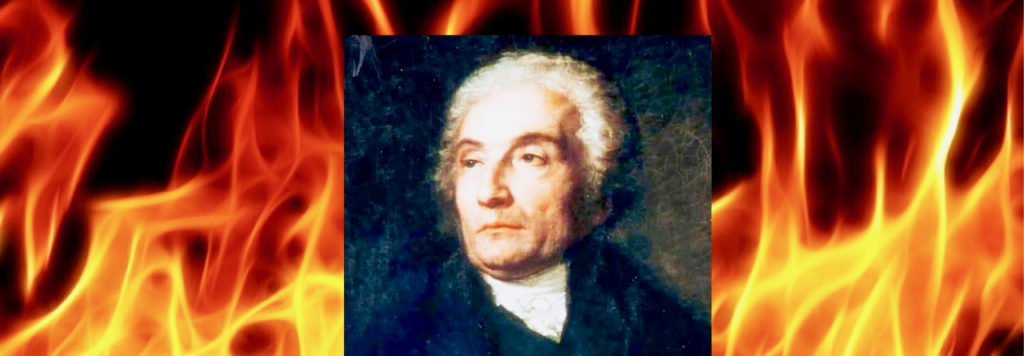
But who were these other men we have just named: Veuillot, Pie, Guéranger, d’Alzon? They have all been the subject of, or at least figured in, articles written for Housetops in recent years by the present writer.
Now we shall look again, if but briefly, at their careers, those of some others like them, and the main ideas each expounded. We do this not simply to show as exactly as possible what it is that is being attacked by liberals within Catholicism who condemn the life of the Church in the nineteenth century as “triumphalist.”
It is also because their ideas, taken together, form a body of thought that can be seen as a blueprint, if not for the restoration of Christendom, at least for the shape of it when it is built anew.
There is one thing that must be said of our thinkers before we consider their careers and ideas. Nearly all of them saw monarchy as the form of government corresponding most closely to what Christian government should be.
In this they closely followed St. Thomas Aquinas, who identified the rule of princes (seconded by a virtuous aristocracy) as the best kind. This does not mean Christian government cannot be republican … Were a Christian republic a contradiction in terms, neither Garcia Moreno nor Jefferson Davis would have enjoyed the homage, public in the one case but obvious in the other, that was paid to both by Bl. Pope Pius IX.
The first thinker to consider is Joseph de Maistre. He is not merely the first for our consideration. He was the first to show the evil of the Revolution in a systematic way. Thus may he be regarded as the father of the Counter-Revolution still being waged, one way or another, by all Catholics who refuse to believe the “end of history” has arrived simply because, for now, the principles of 1789 govern the lives of men in every place where the teachings of the Faith once did.
De Maistre actually spent more of his life in the eighteenth century than in the nineteenth (he died in 1821), but it was in the latter that most of his writing was published and became known.
Born in 1753, in Savoy, when it was a province of the Kingdom of Piedmont and Sardinia, not France, de Maistre was trained as a jurist and became a diplomat. From 1799 to 1817 he served as Minister of the King of Piedmont and Sardinia to the Court of Russia. It was during that time he wrote his great book, Les Soírées de St. Petersbourg.
De Maistre abhorred abstractions every bit as much as liberals depend on them to justify all they do in their ceaseless drive to make an imperfect world perfect. To him no abstraction of the liberals was more pernicious than their notion of Man, a hypothetical being first exalted in the Declaration des droits de l’homme, the Declaration of the Rights of Man, the foundational document of the French Revolution enacted by the National Assembly in 1789. (It was drafted by the Marquis de La Fayette, famous among Americans for his role in our Revolution of 1776.)
With the common sense that is an invariable hallmark of true Christian politics grounded in reality, de Maistre dismissed the abstraction quite simply (this was in his Considerations sur la France):
Man does not exist at all in this world. I have seen Frenchmen, Italians, Russians, etc., but as to Man, I, for one, protest that I have never met him in all my life; if he exists he is to me utterly unknown.
Speaking of the constitution eventually promulgated by the revolutionaries, a constitution based on the Declaration of the Rights of Man (as most have been written ever since), de Maistre says:
A constitution that is made for all nations is not made for any nation; it is a pure abstraction, a scholastic elaboration made to exercise the mind according to an idealistic hypothesis, and which addresses itself to Man, in the imaginary regions which he inhabits.
Elsewhere de Maistre argues persuasively that a people who set out to preserve their freedom by writing a constitution are already losing it.
Not much written by de Maistre is currently available in English, but extracts from his writings, The Works of Joseph de Maistre, Selected, Translated, and Introduced by Jack Lively, was published in this country by Macmillan forty years ago. A trade paperback edition was brought out by Schocken a few years later. Used copies are fairly easy to find.
A contemporary of his was Louis Gabriel Ambroise, Vicomte de Bonald. He was the theorist of Legitimism, the purest of the currents to surface on the French political right following the Revolution.
No mere theorist, however, when the French monarchy was restored after the fall of Napoleon in 1815, de Bonald served as Minister of Education under King Louis XVIII.
Of all his ideas, this is the one that figures most prominently in his work: that the best insurance against the abuse of government power is not government institutions supposed to limit or prevent the abuse, but ethical limitations set by men of power themselves when they are Christian and have consciences well-formed by the teachings of the Faith.
De Bonald also wrote a great deal about the family, that institution to which U.S. politicians always pay lip-service as the “basic unit of society” even though they have more than one ex-wife and routinely vote in Congress for measures bound to damage further what remains of it.
Unfortunately, there is virtually nothing readily available in English by de Bonald even in old editions. What he had to say must be gleaned largely from the writings of others.
Prince Clemens Metternich

Prince Clemens Metternich (1773-1859) was very much a man of power, and his Christian conscience could not have been better formed. Chancellor of the Austrian Empire for most of the first half of the nineteenth century, together with Napoleon and the Prussian Otto von Bismarck, he was one of the three statesmen who most dominated European political life during those hundred years.
Unfortunately, the other two were bent on destroying all that remained of Catholic influence on that life. Metternich alone was dedicated to preserving it. Thus did his name become synonymous with anti-liberalism.
No theologian, he looked to the long history, the tradition, of Christian government that existed before the Revolution as the source of political and social wisdom. As he would write in a dispatch (in French, the only language in which he wrote) to an Austrian ambassador to the Holy See:
I am, Mr. Ambassador, a man of the Church, a strict Catholic, and it is because of that I feel myself to be at the same time a statesman who is practical. The truth is one and the Church is its premier repository. Between religious and social truths, there is scarcely a difference because society cannot live except according to the Faith and religious morality.
Here is another passage from Metternich that elucidates the last one: “Two elements alone remain at the height of their strength and constantly exercise their indestructible influence with a like authority. These are the precepts of morality, both religious and social, and the local needs of men. Once men begin to move away from these bases and to rebel against these sovereign arbiters of their destiny, society is in a state of unrest, which sooner or later will cause an upheaval.”
We wanted to quote that passage because of its statement of the importance of local needs. It is a reminder that according to the Christian conception, real political freedom has no greater enemy than power concentrated in a central government. (In our own country there was always a tension between the local (states’ rights) and the centralizing tendencies of the Federal government.
The tension was pretty much resolved with the military occupation of the Southern states by Federal troops in 1865. This was reflected in popular speech. Before the War Between the States, Americans said, “The United States are…” After 1865 it became “The United States is…”)
For most of his career, Metternich was too busy governing to write books, but in retirement he produced a multi-volume set of Memoires from which both passages cited here are drawn. The Memoires do not exist in English. For a better grasp of this great Catholic statesman, it is necessary to read histories of the period in which he was active, perhaps especially histories of the famous Congress of Vienna, over which he presided.
On Juan Donoso Cortes
The reader can readily find a copy of Catholicism, Liberalism and Socialism, by Juan Donoso Cortes (1809-1853). An edition of it, with an illuminating introduction by the late Dr. Frederick Wilhelmsen, was brought out by Preserving Christian Publications a few years ago.
Donoso Cortes is often called “the Spanish de Maistre.” He was a close friend of Louis Veuillot, of whom we shall speak in a moment.
No one has written more deeply on the cultural and other non-political ramifications of the Revolution. Though it is secondary to his thought, it proves his perspicacity that he predicted Russia and Germany were likely centers of future revolutions that would kill more men than even the ghastly one in France. He also is worth reading to understand how Communism was certain to develop from the Eighteenth Century’s pantheist rejection of God.
However, there is a still more important reason to get Donoso Cortes under our belt. As his readers will come to understand, though he does not have to say it in so many words, he began his career (like the former Socialist Benito Mussolini) as a man of the Left.
As he moved right, he was tempted to stop at authoritarianism (as Mussolini did). Only his embrace of the totally Catholic vision of politics and life itself saved him from personal disaster.
It is important for us to see that in a life. After all, following the great coming together that has taken place in our time between liberalism and its own most extreme expression, Communism, what is there that will save, if not the men of today (for too many are probably beyond rescue), but their descendants?
On Louis Veuillot
.png/552px-Louis_Veuillot_(1875).png)
We said we would speak of Louis Veuillot. A journalist, son of a worker, editor for decades of a Catholic newspaper, L’Univers, Veuillot did not hesitate to combat certain bishops of his day: those who were opposed to a dogmatic definition of papal infallibility.
After the dogma was defined by Vatican Council I, he was rewarded with the personal thanks of Bl.Pope Pius IX for the indispensable role he had played in persuading Catholics of the necessity of the definition.1
As a journalist, Veuillot wrote every day of his life for forty-five years. He also managed to squeeze out a few books. One of them, The Liberal Illusion, was published in English in the U.S. early in the twentieth century. Copies still exist in the libraries of some of our larger Catholic universities.
As can be imagined if we speak of the hands-on editor of a daily newspaper, there was very little about which Veuillot did not write over the years. Except to specialists, a lot of it can be difficult to understand today because we are unfamiliar with the issues he was addressing (we can have the same problem when we read the columns Chesterton used to write for newspapers). The best bet is to read whatever extract of Veuillot you see anywhere.
Here is one (it is drawn from The Liberal Illusion):
Men have the power (or faculty) of doing evil and of not doing good. Who does not know that and who denies it?
But it is a strange folly indeed to conclude that God, in granting man this power, gave him the example and precedent of impartiality between truth and error, between good and evil. The least reflection will bring to mind any number of divine and merciful barriers with which God has curbed the evil exercise of our power to choose and refrain.
He takes away from us the recourse of choosing annihilation and leaves us no choice except to decide between two eternities. To refrain from making the choice is to have already chosen. This is what is called with so much emphasis human freedom!
This miserable quid pro quo is the foundation on which the whole doctrine of liberalism is built. There is no such thing as human freedom in this perilous sense. God has not made weak creatures a present of this dangerous gift. God alone is free. To us He has given, not freedom, but free will.
What we are really free to do is whatever we can do with impunity in the sight of an infinitely just God. Well and good, can we then with impunity refuse to obey God, refuse to serve Him, refuse to see that, so far as in us lies, God is obeyed and served? Can we with impunity refuse to hear the Church?
“This is the question stated in its only true light. All efforts to evade it, however much they may be applauded, amount to nothing more than futile displays of futile ingenuity. [Veuillot now refers to Quanta cura, an encyclical issued in 1864 by Bl. Pope Pius IX. This encyclical was the vehicle for the promulgation of Pius’ famous Syllabus of Errors. In it the liberal conception of freedom was branded as “the liberty of perdition.”]
Of this liberty the encyclical traces in outline, the Syllabus in detail, the unmistakable features, and this sort of liberty the secular powers do not contest… but, on the contrary, they positively favor it and even enforce it. In so doing, their instinct does not play them false! All that emancipates man from the power of God subjugates him to the power of this world; the confines over which he leaps in defying the Divine prohibitions are always the confines of Eden.
Reference was made a few lines ago to Quanta cura (concerning current errors), a major encyclical in the history of the modern Church. So used have we become in recent decades to papal encyclicals written in such a way that few could tell if they had anything relevant to say because most found them unreadable, we forget that papal documents were once characterized by great force of thought and clarity of language.
It was the case throughout the nineteenth century, which, by itself, is cause enough for today’s liberals within Catholicism to condemn the time. The sound of anything but an uncertain trumpet unnerves them.
For us, it is one more reason to regard the century as great in the history of the Church. Anyone interested in the period from the Catholic point of view should read, besides Quanta Cura, at least the three encyclicals of Leo XIII already named here (plus his Humanum Genus [on Freemasonry]) and, going back to Gregory XVI, the immediate predecessor of Bl. Pope Pius IX, Mirari Vos (on liberalism and religious indifferentism) and Singulari nos (on the errors of Lamennais).
Felicité Lamennais was a tremendously influential French priest of the 1820s and ‘30s with heretical tendencies. He finally died outside the Church. We recommend this encyclical concerning his errors because readers familiar with the work of Jacques Maritain can see, on the basis of the document, that a direct line can be traced from Lamennais to him.
Maritain, of course, was one of the most influential Catholic thinkers of the twentieth century, as much or more so in America as in France. Pope Paul VI, who can truly be described as his disciple, wanted to make him a cardinal. Maritain, a layman, did not condescend to accept the honor.
Cardinal Pie, Dom Guéranger and Father d’Alzon
Other churchmen besides the popes contributed mightily to the development of Catholic political and social thought in the nineteenth century, as well as to the further definition of certain points of the religious doctrine as was the case with the Immaculate Conception and papal infallibility. We are going to have to ignore here such figures as the great Bishop Ketterer in Germany and Msgr. Seipel in Austria and deal only with three we have already named.
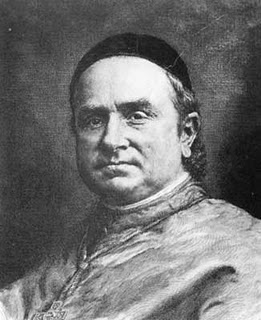
Louis-Edouard-Désiré Cardinal Pie (1815-1880) would be seen as a giant in the sea of pygmy prelates who characterize the Church’s episcopacy in our day.
In any age, he would be seen as great, at least by Catholics “with eyes to see.” Made Bishop of Poitiers, and thus a successor of St. Hilary, in 1849, he remained in that see until the end of his life, but his influence in France was national.
For instance, it was his initiative that led to the building, on Montmartre in Paris, of the national shrine of the Basilica of the Sacred Heart (Sacre-Coeur) in expiation for the Revolution and the sin of liberalism.
The old Catholic Encyclopedia (1913) has this to say of Pie:
Regarding as futile the compromises accepted by other Catholic leaders, he fought alike all philosophical theories and political arrangements that did not come up to the full traditional Catholic standard.
By 1848, when he was still vicar general of Chartres, political arrangements in France since the Revolution had included the First Republic, the Directorate, the Consulate, the First Empire, the Restoration, the liberal monarchy of King Louis-Philippe I, and now a Second Republic (which would transform itself in four years into the Second Empire).
Speaking at a ceremony in Chartres in 1848, Cardinal Pie said,
Do you know why during the past half century we have seen perish among us every form of government, including even that to which we are returning today? I am going to tell you. All these forms in which society has dressed itself have perished because, beneath the forms, a soul was lacking.
Now, it may be wonderfully provided with joints and a network of muscles, but a body without a soul is a cadaver, and it is the lot of a cadaver eventually to fall apart. The soul of every human society is belief, doctrine, religion, God. Our modern societies have been too long divorced from God.
On another occasion, in 1856, by which time the Second Empire had come into being, Cardinal Pie was received in audience by Napoleon III, of whom we have already spoken. The meeting makes us think of the one between St. John the Baptist and King Herod Agrippa. It is a famous one, at least among Catholics who love the idea of the truths of their Faith being advanced with real courage.
In effect, the great prelate lectured the Emperor on the kind of measures that would be enacted by a government if it recognized our Lord as the true ruler of society. Did His Excellency really believe, Napoleon wondered out loud, that enactment of such measures would be “timely”?
“Sire,” the prelate answered, “since the time has not come for Christ to reign, then the time has not come for government to last.”
The Second Empire would disappear in 1871, replaced by the Third Republic.
The reader may correctly infer that the social reign of Christ the King was Cardinal Pie’s great subject. After he died in 1880, his writings as a priest and prelate were collected and published in twelve large volumes.
Although the social reign was a constant theme with him, he devoted no single work to it. However, in 1923, Rev. Théotime de St. Just published La Royauté Sociale de N.S. Jesus-Christ d’après le Cardinal Pie (The Social Reign of Our Lord Jesus Christ according to Cardinal Pie).
By drawing from the entire body of the cardinal’s writing, Fr. St. Just was able to make a systematic presentation of the prelate’s thinking on Christ’s Kingship. The work was subsequently somewhat revised in order to adjust it to the fateful condemnation in 1926 of Action Francaise, the royalist movement that dominated the French political right in the years between the World Wars.
However, it was again published in its original form, in French, in 1988 and remains available. Readers who can make their way in French really ought to obtain a copy.
Here is some indication of why they should. In the preface to his 1942 book, The Mystical Body of Christ and the Reorganization of Society, Ireland’s formidable champion of the rights of Christ the King, Rev. Denis Fahey, wrote:
“I wish to make special mention of one book because of the help it has been to me in seeing the history of the world in its true perspective, that is, in relation to our Lord. That book is La Royauté Sociale de N.S. Jesus-Christ d’après le Cardinal Pie, by Rev. Théotime de St. Just.
Pope St Pius X told the students of the French Seminary, Rome, in audience, that he had read and re-read the works of Cardinal Pie. Other Sovereign Pontiffs, Pius IX, Leo XIII, Benedict XV, have added their encomiums to those of Pius X. I may say that the great Cardinal’s ideas permeate every chapter of this book.
Foreword for Monarchy by Roger Buck
On Dom Prosper Guéranger
Probably Cardinal Pie’s closest friend in this world was Dom Prosper Guéranger. Such was the relationship between these two old warriors for the Faith that when Dom Guéranger realized he was dying, he stipulated that Cardinal Pie be called upon to deliver the eulogy at his funeral.
Dom Guéranger, of course, was abbot of the great Benedictine monastery of Solesmes. He is remembered today chiefly for his restoring, almost single-handedly, the tradition of Gregorian Chant to its original purity and as it still may be heard today at Solesmes, not to speak of Fontgombault and that community’s daughter houses, now including one in Oklahoma.
An article on the life and work of Dom Guéranger by the present writer was published in Housetops too recently for it to be necessary to tell the story again here.
All we want to say at this time is that if there is a reader who has yet to obtain the volumes of Dom Guéranger’s The Liturgical Year, recently brought back into print in a complete edition by Loreto Publications, he should hasten to correct his failure.
The work costs a fair amount of money, but it is not unusual for it to become the main spiritual reading of faithful Catholics, and for a lifetime. What makes it especially valuable, apart from its elucidation of the Church’s liturgy as such, is the light it shines on history, politics, culture, personal morality, and Catholic life as an integral whole.
The life of Ven. Fr. Emmanuel d’Alzon, founder of the Assumptionist Fathers, was also the subject of a recent article by this writer for Housetops. The article includes the quotation of all the major points of an allocution delivered by Ven. Fr. d’Alzon to the priests of his order. Read it and be struck dumb with admiration for the way this great and holy priest leaves no room whatsoever for the equivocation of truth.
A Closing Note on Catholic Art and Music
Nothing has been said here about all the great Catholic art produced in the nineteenth century. We must not conclude without some mention of it, but of what specifically? We could speak of the Gothic revival in architecture or of painting (like a mural by Delacroix in the Church of St. Sulpice in Paris), but let us go to music, specifically that of one of the most unjustly neglected composers of all time, Luigi Cherubini.
An Italian who had his career in France, Cherubini was far too politically incorrect not to be neglected today. Named Director of the Paris Conservatory with the restoration of the monarchy under Louis XVIII, his great works include a Mass (in C Minor) for the repose of the soul of King Louis XVI, and another for the coronation of Charles X, the last legitimate King of France.
The C Minor Mass was composed and first performed for the translation of the remains of King Louis and Queen Marie Antoinette from the graves into which their murderers had cast them to the royal necropolis at the Cathedral of St. Denis on the outskirts of Paris for Christian burial. A couple of recordings of it are currently available in this country. Obtain one.
Envision the great cathedral filled with all the royal court led by Louis XVIII himself, high government officials and military officers, the hush of the crowd outside punctuated by the sobs of men and women still living who could remember the reign of the martyred ones, and then, as the music of this Mass begins, the two coffins bearing the remains of the King and Queen being borne down the central aisle to the high altar.
See if the music and vision do not stir you, but listen to the end of the recording. You will be rewarded with perhaps the most angelic, the most beautiful, the most moving Agnus Dei in all the musical literature of the Mass.
Maybe this writer’s hearing of it is always too colored by personal sentiment. I shall concede that my feeling for what once was may overpower me. But this evening, when my day’s work is done, I shall pour myself a glass of wine, listen to this music once again, and think on the glories of the Great Nineteenth.
Attribution and afterword by R. Buck follows below …
Foreword for Monarchy by Roger Buck

2011 Attribution and Afterword:
This piece has been offered to us by the website of the Slaves of the Immaculate Heart of Mary – catholicism.org. There are other fascinating pieces by Gary Potter there as well.
We are grateful for their generosity in extending us the right to use this work under the Creative Commons Attribution – Share Alike License.
As we understand it, this license permits us to modify the piece.
We have mentioned very small cuts for the reasons given above. These have been indicated with: …
Other changes we judge far less significant. They were mainly made for easier reading from a computer monitor. Thus, for example, we took the liberty of breaking up longer paragraphs and adding some image captions as well subtitles in bold.
Editing this piece is likely to be a thankless task. Those of a modern persuasion may be disturbed by us even featuring it at all. Meanwhile, many traditionalists will simply say that Potter has the courage to think through the consequences in a consistent fashion, as the Vatican once courageously did in the Nineteenth Century. Potter has guts they will say and perhaps we are gutless.
We stand by what we have done. The spirit of this Nineteenth Century often French Catholic resistance needs to be recalled and honoured. For this, we give profound thanks to Gary Potter.
But other things need to be honoured as well – including the effort required by charity and the Magisterium under His Holiness, Pope Benedict XVI.
For us, Valentin Tomberg both honours the tremendous perspicacity of Nineteenth Century Ultramontanism and points a way forward that includes modernity, without becoming a slave to modernity …
Foreword for Monarchy by Roger Buck
Buying Books at Amazon Through These Links Gives Us a Commission. This Supports Our Apostolate. Thank You if You Can Help Us Like This!





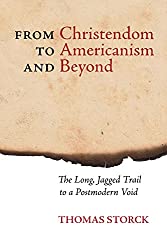

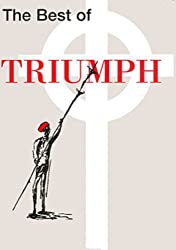

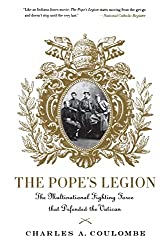

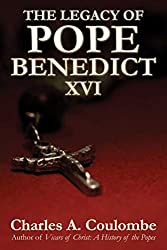
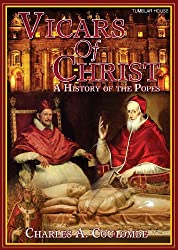
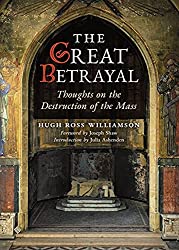


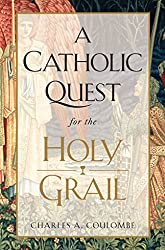





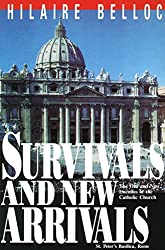
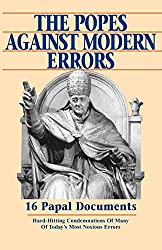
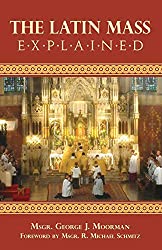
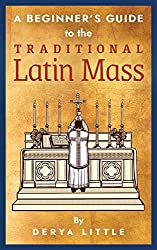
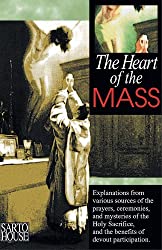
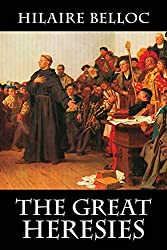
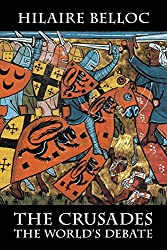
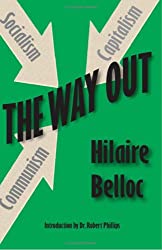
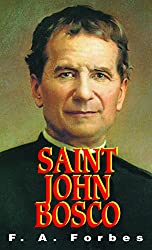
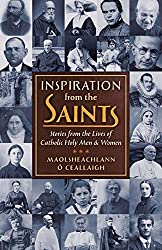
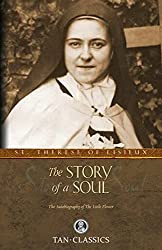
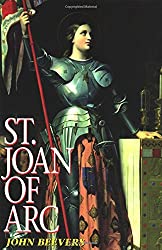
Comments
comments are currently closed
3 responses to “The Great Nineteenth”
[…] Cor Jesu Sacratissimum HomeDedicationAbout UsKim's WeblogRoger's WeblogWebburstsReviewsArticlesUK StoreUS Store « The Great Nineteenth […]
[…] Well among other things, he is the author of a piece, which has just been published at this site. The piece is here and is called The Great Nineteenth. […]
[…] The article is entitled The Great Nineteenth by Gary Potter and with my foreword, it can be found here. […]